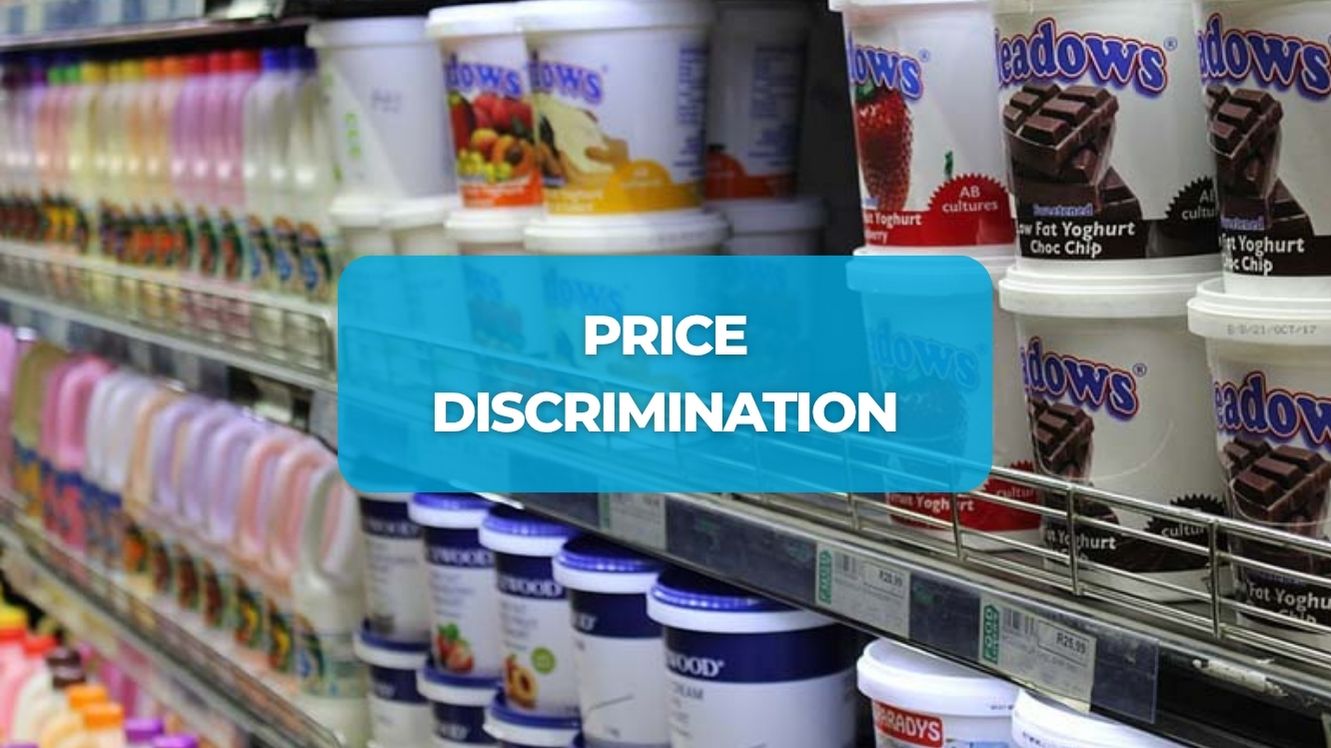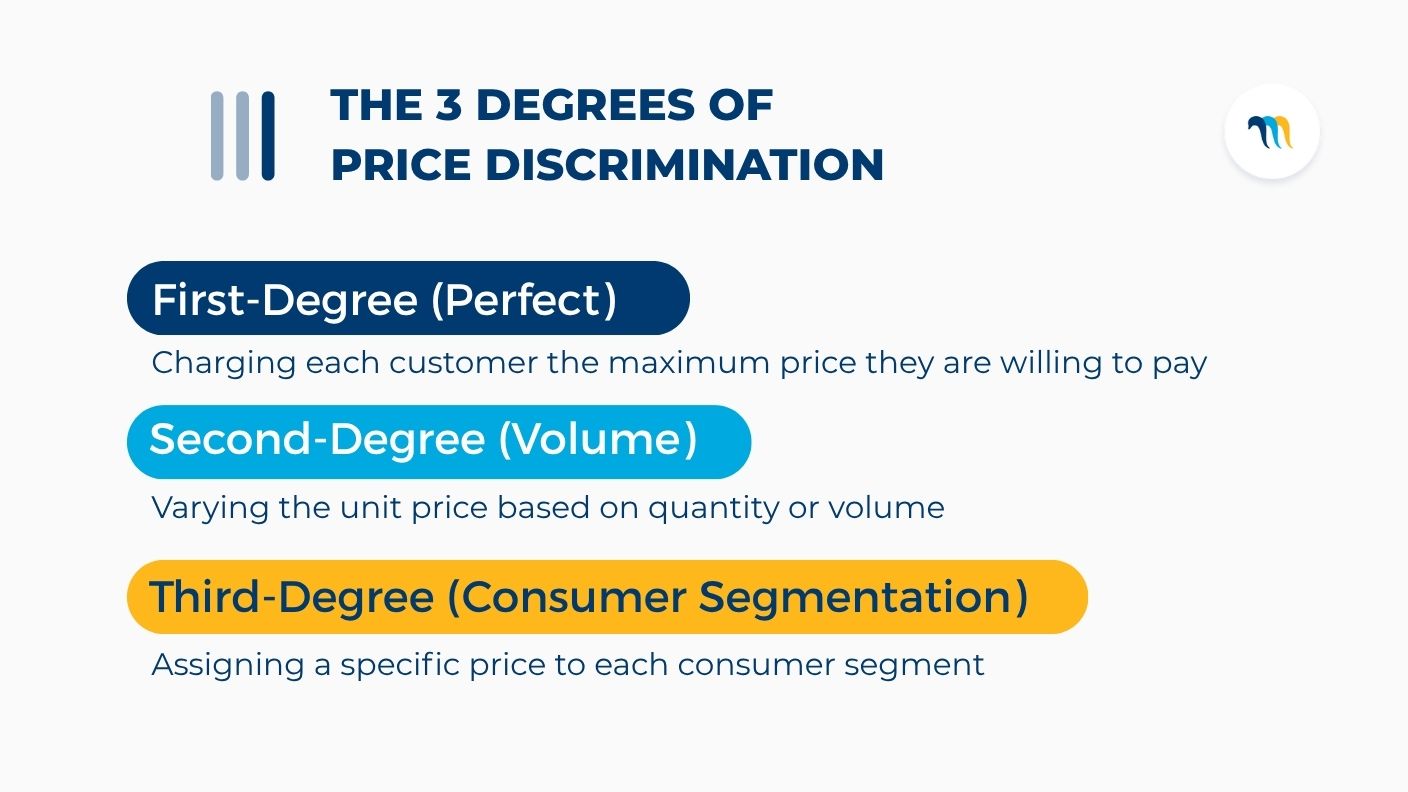
Price Discrimination: What It Is, Types, and Examples
The Complete Guide
The Complete Guide

Price discrimination is a strategy of charging different consumers different prices for the exact same product or service. Far from being some shady or unfair practice, it's one of the most powerful strategic tools used by the world's most competitive companies to optimize revenue and adapt to real market demand. If you've ever wondered how some businesses manage to maximize profitability with almost surgical precision, the answer often lies in a smart implementation of this technique, powered by Price Intelligence solutions.
In this definitive guide, we will completely demystify the concept. We'll break down what it is, how it differs from personalization, the three theoretical degrees that underpin it, its legal framework in today's e-commerce, and most importantly, how you can start applying it effectively with the help of technology.
"True pricing intelligence isn't about dropping prices; it's about understanding the value each customer segment perceives and adapting to it. Price discrimination, powered by technology, turns that understanding into profitability."— Antonio Tomás, CEO of Minderest

Before we dive deeper, it's crucial to distinguish between two terms that are often confused but operate on different scales. Mastering this difference is the first step toward designing a sophisticated pricing strategy.
While personalization is the horizon, segment-based price discrimination is the most widespread, effective, and accessible strategy for most retailers and brands today.
To fully grasp this strategy, it's essential to understand the classic classification developed by British economist Arthur Pigou in the early 20th century. These three degrees describe the levels of perfection with which a company can align its prices with its customers' willingness to pay.
First-degree price discrimination is the theoretical ideal where a company manages to charge each customer the absolute maximum price they are willing to pay for a product. This allows the company to capture the entire consumer surplus. In practice, it is extremely difficult to implement on a large scale.
Common Examples:
More straightforward and common, second-degree price discrimination involves varying the unit price based on the quantity or volume consumed. The core idea is: the more you buy, the less you pay per unit. It doesn't differentiate between customer types, but by the amount they purchase.
Clear Examples:
This is, by far, the most common form of price discrimination in retail and e-commerce. It involves dividing the market into different consumer segments and assigning a specific price to each. The segmentation is based on observable attributes that often correlate with willingness to pay or demand elasticity.
Practical Examples:
Implementing these models is a fundamental part of any pricing strategy that aims to go beyond cost-plus or simple competitor-based pricing.
This is the key question for any manager, and the direct answer is: yes, price discrimination is a legal practice, as long as it is not based on legally prohibited criteria that discriminate against protected classes (such as race, gender, religion, or national origin).
The conclusion is that the key to a legal and ethical price discrimination strategy lies in transparency and the use of legitimate, objective, commercial segmentation criteria.
Turning theory into tangible results requires a structured approach and the right tools. Applying these rules manually to a catalog of hundreds or thousands of products is simply not feasible.
Start by analyzing your customer base and sales channels. Ask yourself questions like:
Once you've identified your segments, assign specific pricing rules. For example:
This is where technology becomes indispensable. A dynamic pricing platform allows you to automate the application of all these complex rules in real-time.
Imagine an electronics e-commerce store wants to implement a sophisticated pricing strategy. This is where Reactev, Minderest's Dynamic Pricing tool, comes into play.
For third-degree discrimination, the e-commerce store can configure the mobile app and website as two distinct sales channels. Reactev will analyze demand and competition for each channel and generate optimized price suggestions. For instance, it might suggest a price of $999 for a laptop on the website, while for the app channel, it proposes a price of $949 to incentivize its use.
Simultaneously, for second-degree discrimination, the strategy is rounded out with volume offers. For example, a "10% discount when buying 3 or more phone cases" can be applied. This promotional rule is managed from the e-commerce platform, complementing the base price optimized by Reactev to build the final offer the customer sees.
This type of software is the engine that allows you to execute not only segmentation but also other advanced rules. Learn more in our guide to Dynamic Pricing.
Price discrimination is a business strategy of selling the same product or service at different prices to different groups of consumers. The goal is to align the price with each segment's willingness to pay to maximize revenue.
The three types are:
Yes, it is legal as long as the segmentation is not based on protected characteristics (like race, gender, etc.) and complies with transparency regulations, such as the Robinson-Patman Act in the USA and the Omnibus Directive in the EU/UK which governs the announcement of price reductions.
Price discrimination is a segmentation strategy (the "what" and "why"). Dynamic pricing is the technology that allows you to execute that strategy (along with other rules based on competition, stock, or demand) automatically and in real-time.
We've broken down what price discrimination is, its theoretical foundations, its legal framework, and most importantly, its practical application. Far from being an abstract concept, it is one of the most effective levers for brands and retailers to stop competing solely on price and start competing with intelligence.
Implementing a well-designed segmentation strategy, supported by the right technology, allows you to capture more value from the market, improve loyalty in key segments, and ultimately, dramatically optimize both sales and profit margins.
Discover how our Dynamic Pricing software helps you segment and optimize your prices in real-time. Request a demo
Find out how Minderest can take your business to the next level.
Contact our pricing experts to see the platform in action.


